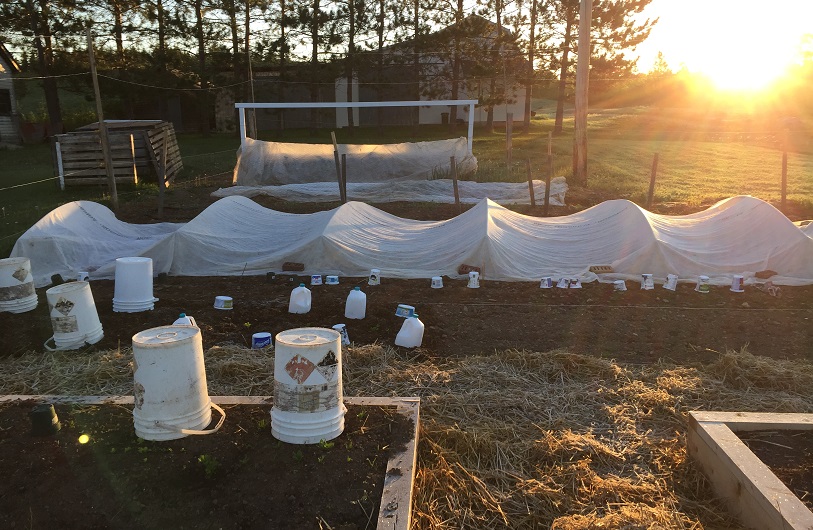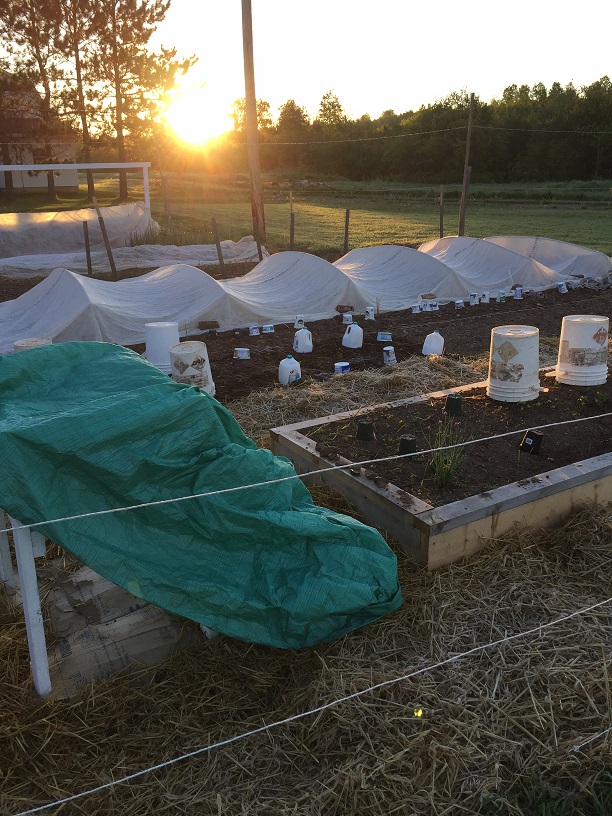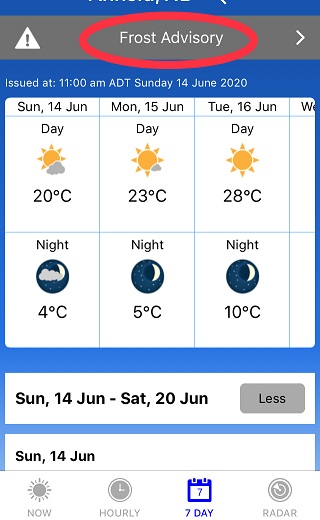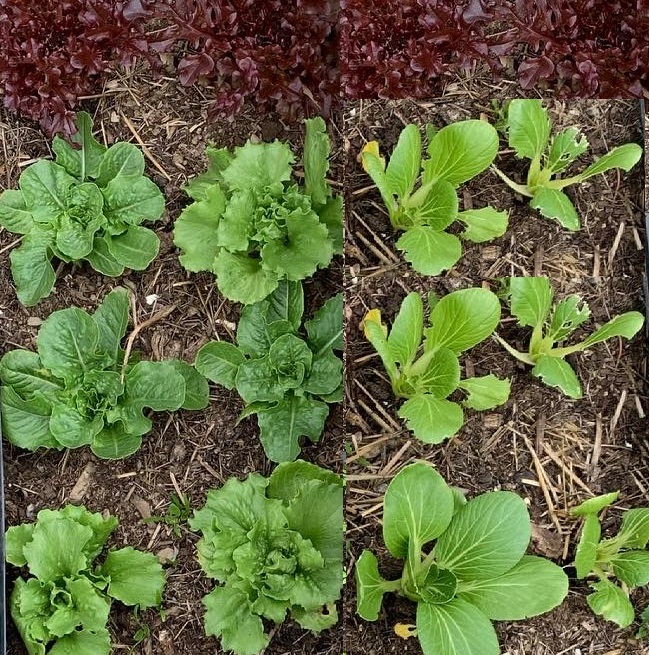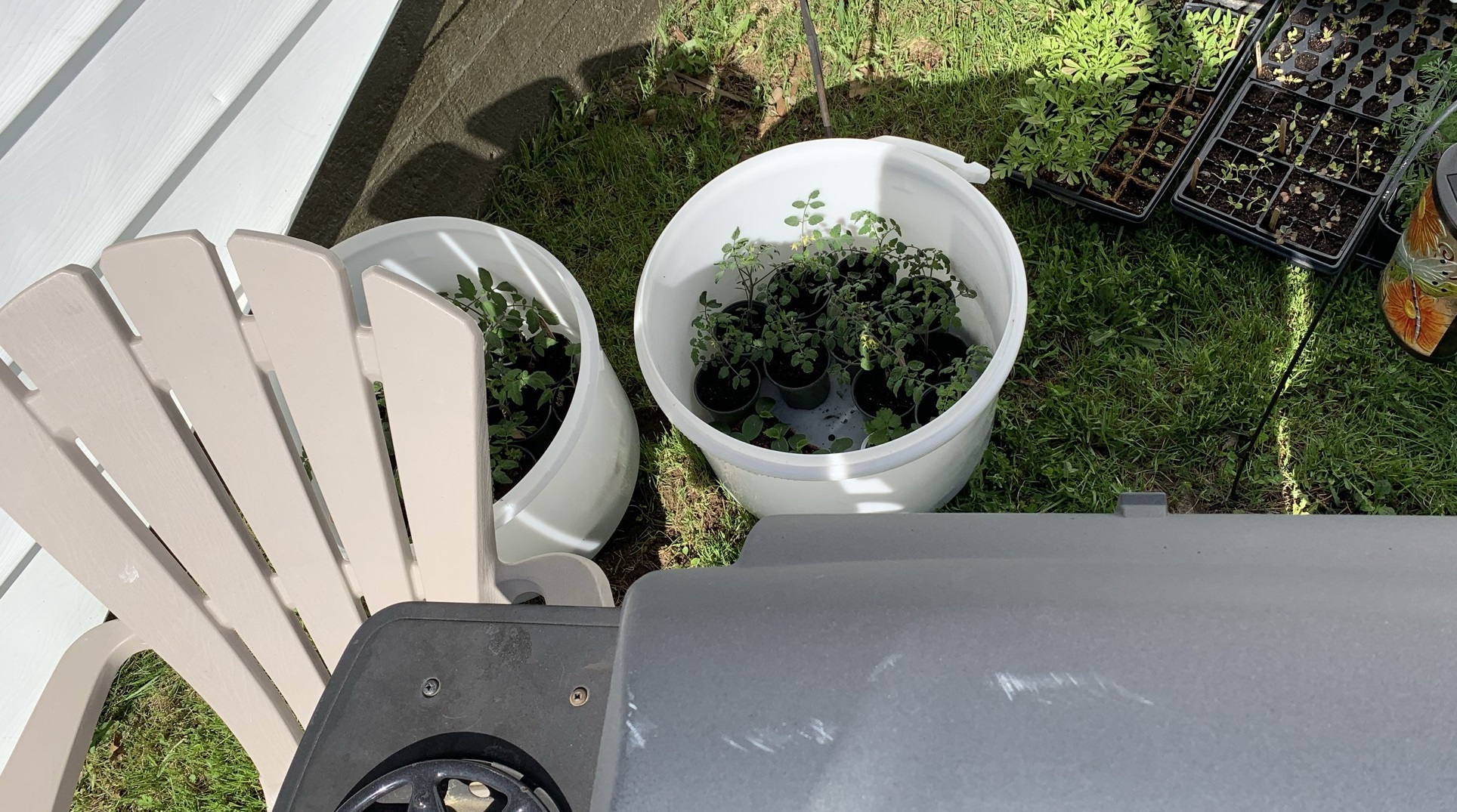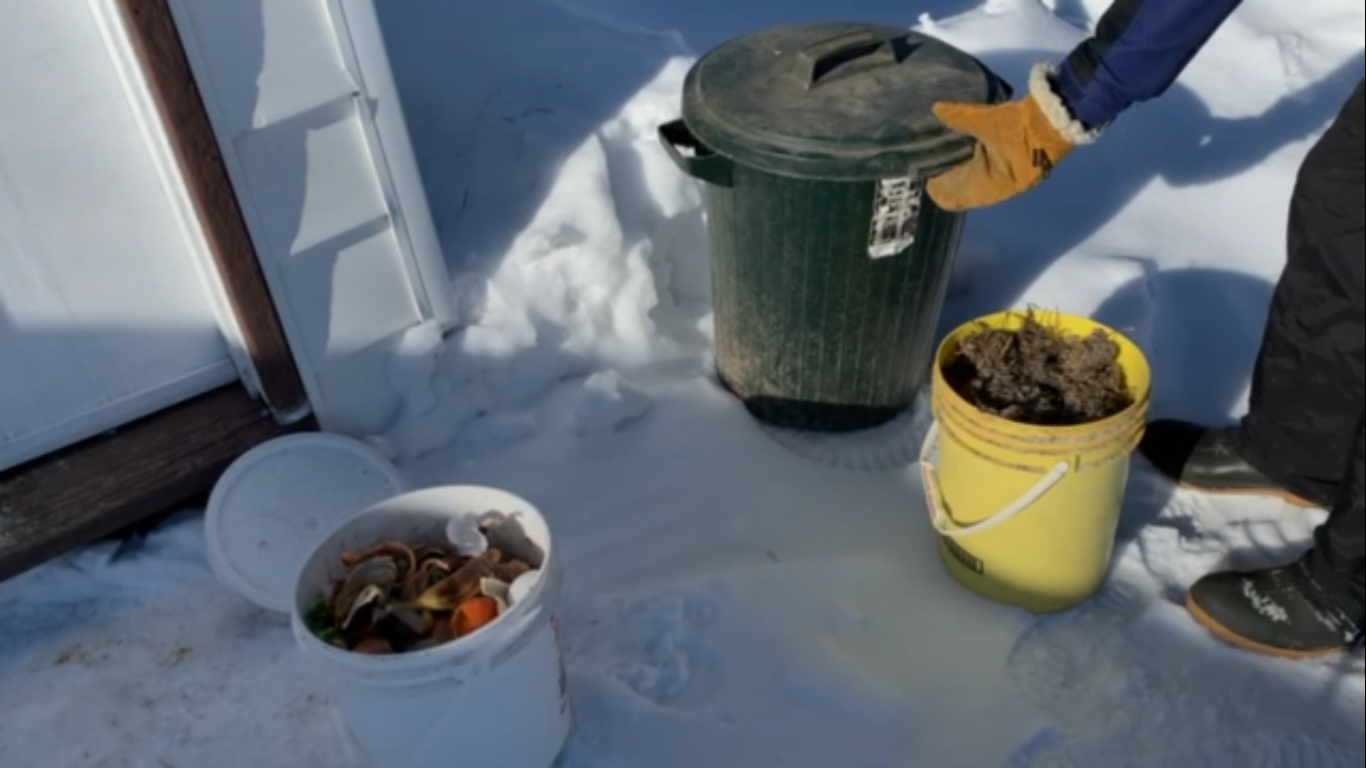Frost Protection For Plants – Without an expensive greenhouse
Providing frost protection for plants in cold climate gardens need not be difficult or expensive. You can add weeks to your growing season without a greenhouse or even a cold frame with some simple plant frost protection techniques.
If you live in Plant Hardiness Zone 3 in a low lying area, and have gardened for any length of time, you know the damage that an untimely frost can cause to your tender vegetable plants.
Some of us are risk-takers and like to push the envelope on both ends and take our chances in the garden but even the most cautious gardener can get caught.
Frost Protection for Plants
Here are a few things you can do to lesson your chances of losing a harvest to unseasonable weather.
1. Know the frost sensitivity of plants. Members of the Brassicaceae or Cruciferae family (more commonly known as the cabbage family) are extremely frost hardy and do well at both ends of the season. So plant your kale, Brussels sprouts, broccoli, cauliflower, arugula, and radish as soon as the ground is warm enough and dry enough to be worked.
Peas and spinach tolerate the cold very well and in fact dislike the heat, so plant them early as well.
Beets, onions, Swiss chard, carrots, and lettuce are fairly frost tolerant as well so you can put those seeds in the ground early. The only caution is that if the ground is too cold and wet, the tiny seeds will not germinate but will rot in the ground.
On the other hand, corn, beans, and cucurbits (cucumbers, squash, pumpkins, and melons) will tolerate very little frost; and tomatoes and peppers will stand NO frost at all.
2. Know the average last frost date for your area. Plan your seed planting so that no frost sensitive planting will be germinated before the last frost. Don’t set out your frost sensitive transplants until after that date.
3. Don’t mulch your frost sensitive plants until all danger of frost is past. Normally the ground radiates some heat and offers some frost protection, but the mulch will hold that heat in the ground.
4. Watch the moon. Although meteorologists deny it, old-timers will insist that there is more danger of frost around the time of full moon.
5. Watch the weather forecast like a hawk but don’t trust it. If the forecast is for 40 degrees Fahrenheit (4 degrees Celsius) or below, you may want to provide some frost protection, especially if your plants are in a low lying area. (I’ve seen frost in my garden when my neighbor up the hill had none.)
6. When a late spring frost is forecast, it is time to get serious about frost protection for plants. Cover your frost sensitive plants the previous evening, early in the evening while it is still warm. Use pails, pots, newspapers, row covers, ice cream containers, milk jugs with the bottoms cut out; whatever is available. Be careful using heavy blankets or tarps, not to crush the tender plants. If you use a sheet of plastic, do not let the plastic touch the plants. The frost will burn the plants right through the plastic. The ideal cover is a low tunnel (hoops made of electrical conduit or some other form of rod and then covered with a row cover allowing an insulating air space.
7. Sometimes a frost can catch you totally by surprise or maybe your garden is too large to cover, especially at season’s end. The only frost protection for plants then is irrigation. If you know a frost is coming and you can’t cover everything, give it a good watering the night before. Then, just as the sun is rising, spray the frost off the plants. As long as the plants themselves do not freeze, a light frost will usually not do any damage until the sun hits it. So you want to be out there as the sun is coming up, lightly spraying the frost off all exposed frost-sensitive plants. In the fall of the year, heavy watering at sunup can even mitigate damage from a moderately heavy frost.
Hint: Be sure to take the hose inside the night before so you don’t start out with a frozen hose.
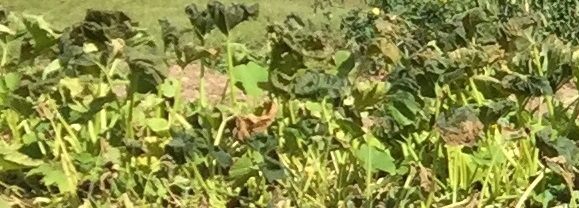 The results of a hard frost
The results of a hard frost8. When a hard frost is forecast at the end of the season, don’t take any chances. You’ve worked hard all season and want to enjoy the fruits of your labor. Pick your squash and pumpkins. Either pull the tomato and pepper plants by the roots and hang them upside down inside, or pick the fruit. You can ripen your tomatoes indoors.
9. Your root crops can stand a lot of frost but will need harvested before freeze-up and properly cured and stored for the winter.
